 |
Home > Photography
> Tips & Techniques > Exposure
Updated 8/17/2017
Photographic Tips &
Techniques
Exposure Control
Properly capturing an image requires the correct
shutter speed and aperture combination to be determined and set, either
automatically or manually by the photographer. A given light
intensity can be properly exposed on film or a digital sensor with not
one but a wide range of shutter speed and aperture combinations. Determining which combination is 'best' depends upon the intended
result, ISO setting, ambient light, flash power, and lens focal length.
| APERTURE CONTROLS FLASH EXPOSURE
SHUTTER SPEED CONTROLS BACKGROUND
BRIGHTNESS |
Properly capturing an image requires
the correct shutter speed and aperture combination to be determined and set,
either automatically or manually by the photographer. A given light intensity
can be properly exposed on film or a digital sensor with not one but a wide
range of shutter speed and aperture combinations. Determining which combination
is 'best' depends upon the intended result, ISO setting, ambient light, flash
power, and lens focal length.
|
|
ADJUST APERTURE TO MATCH FLASH-TO-SUBJECT DISTANCE @ FULL POWER
METER THE MIDWATER AREA OR SANDY BOTTOM
ADJUST SHUTTER SPEED FOR UNDEREXPOSURE OF
-1 to -2
|
|
Diving in tropical water I normally keep the shutter speed at 1/125 and
adjust aperture based solely upon flash-subject distance at full power, Manual
exposure mode. In very shallow water I will raise shutter speed to the
highest flash sync speed (1/200 second) to prevent burnout. In deep or dark
conditions I may reduce the shutter speed to a minimum that matches the focal
length and magnification factor of the lens in use. Ideally the shutter
speed/aperture combination will allow a proper flash exposure at or near full
power (assuming use of TTL flash) and ambient light underexposure between -1
to -2.
|
For example at ISO 100 at 30 feet
deep, flash output at 3 foot subject distance of f/11 (fish or wide angle
photos), the light meter reading taken from midwater on an average day in the
tropics should give a shutter speed around 1/125 I set the shutter speed
manually to 1/125 until going back into the shallows, where I'll dial it up a
stop or to the highest sync speed.
|
| SHUTTER SPEED & LENS FOCAL LENGTH
As a general rule the shutter speed should not be longer than the
reciprocal of the lens' focal length to prevent blurring of an otherwise
focused image. The image will be slightly unsharp overall. You
must also account for the multiplication factor when the lens is used with a
digital SLR (most are 1.5 or 1.6x) that has an image sensor smaller than a
35mm film frame.
Full-frame DSLR 60mm = > 1/60
second 100mm = > 1/125 second
APS-C DSLR (1.5x crop) 60mm => 1/125
second 100mm = > 1/200 second
If you must use a slower shutter speed the camera and subject must either
be completely motionless or add a burst of flash to create a sharp
image. In the underwater environment, the flash option is the preferred
method.
|
ADJUST APERTURE TO MATCH FLASH-TO-SUBJECT
DISTANCE @ FULL POWER
METER THE MIDWATER AREA
ADJUST SHUTTER SPEED FOR UNDEREXPOSURE OF
-1 to -2
Diving in tropical water I normally keep the shutter speed at 1/125 and adjust aperture based
solely upon flash-subject distance at full power, Manual exposure
mode. In very shallow water I will raise shutter speed to
the highest flash sync speed (1/180 second) to prevent burnout.
In deep or dark conditions I may reduce the shutter speed to a minimum that
matches the focal length and magnification factor of the lens in use. Ideally the shutter speed/aperture
combination will allow a proper flash exposure at or near full power
(assuming use of TTL flash) and ambient light
underexposure between -1 to -2.
For example at ISO 50 at 30 feet, flash output at 3 foot subject
distance of f/5.6 (fish or wide angle photos), the light meter reading
taken from midwater on an average day in the tropics should give a shutter speed
around 1/60. I set the shutter speed manually to 1/125 until
going back into the shallows, where I'll dial it up a stop or to the
highest sync speed.
| For macro the shutter speed should be left alone since the
resulting aperture/shutter combination will result in a terribly
long exposure thus producing camera shake/blur (1/8 @ f/22) and cyan
shadows. This will happen automatically if you shoot on any of
the automatic exposure modes (A,S, P, Green, Scene) with a small
aperture. This technique can be used if you
intend to create an artistic blur effect as long as the camera is held
perfectly still during exposure. If your camera/flash has a
Trailing Curtain Flash mode use it in this situation to create a blur
that trails behind a moving fish as you pan to follow it.
|
|
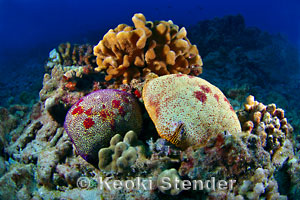
1/125 sec., f/8, flash full power
|
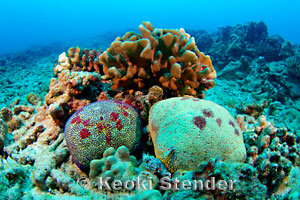
1/15 sec., f/8, flash full power
Note cyan shadows filled by available light
|
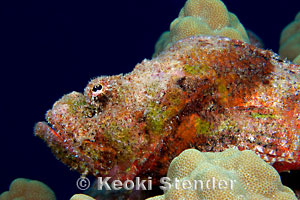
1/125 sec., f/19, TTL flash |
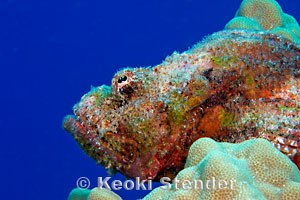
1/120 sec., f/19, TTL flash
|
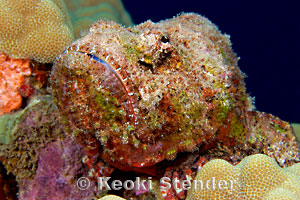
1/125 sec., f/19, TTL flash
|
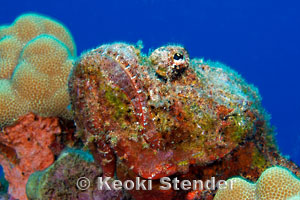
1/15 sec., f/19, TTL flash
|
|
|
|



